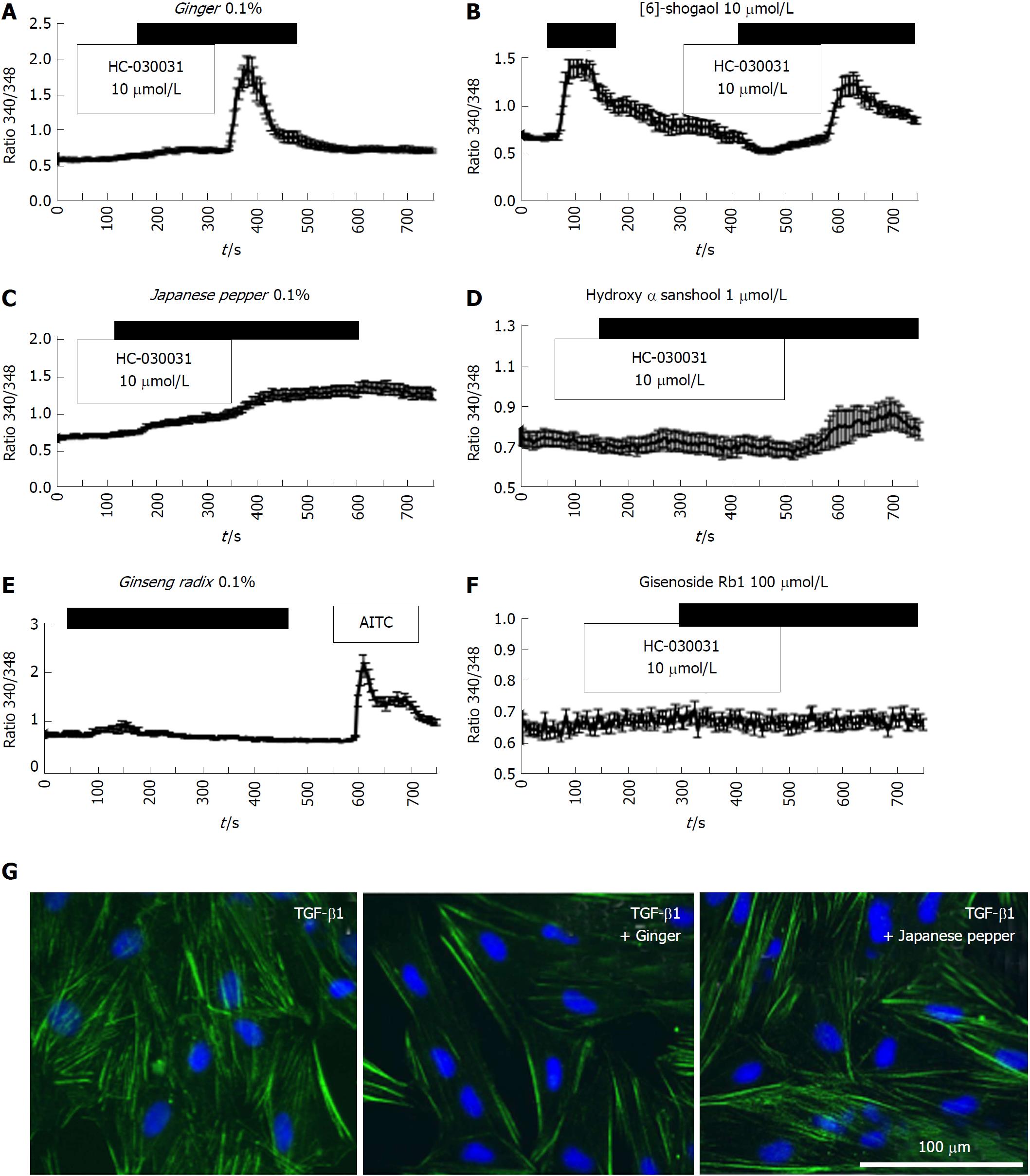Copyright
©The Author(s) 2018.
World J Gastroenterol. Sep 21, 2018; 24(35): 4036-4053
Published online Sep 21, 2018. doi: 10.3748/wjg.v24.i35.4036
Published online Sep 21, 2018. doi: 10.3748/wjg.v24.i35.4036
Figure 4 Crude components/ingredient of Daikenchuto induce Ca2+ responses via the transient receptor potential ankyrin 1 channel with anti-fibrotic effects in intestinal myofibroblasts.
A-D: Representative [Ca2+]i responses in InMyoFibs cells. Cells were exposed to ginger (0.1%), Japanese pepper (0.1%), 6-shogaol (10 μmol/L), or hydroxy-α-sanshool (1 μmol/L), which evoked measurable increases in [Ca2+]i; E and F: Cells were exposed to ginseng radix (0.1%), ginsenoside Rb1 (100 μmol/L), or AITC (10 μmol/L). Only AITC evoked a measurable increase in [Ca2+]i in InMyoFib. The vertical axis indicates the 340/380 fluorescence ratio. Respective data points represent means ± SEM from > 30 cells; G: Ginger (0.1%) or Japanese pepper (0.1%) suppressed TGF-β1-induced α-SMA expression in InMyoFibs. Immunostaining images of InMyoFibs with anti-α-SMA (green) antibody and DAPI (blue), and no treatment or 24 h TGF-β1 (5 ng/mL) treatment. AITC: Allyl isothiocyanate; InMyoFib: Intestinal myofibroblast; α-SMA: α-Smooth muscle actin; TGF-β1: Transforming growth factor-β1.
- Citation: Hiraishi K, Kurahara LH, Sumiyoshi M, Hu YP, Koga K, Onitsuka M, Kojima D, Yue L, Takedatsu H, Jian YW, Inoue R. Daikenchuto (Da-Jian-Zhong-Tang) ameliorates intestinal fibrosis by activating myofibroblast transient receptor potential ankyrin 1 channel. World J Gastroenterol 2018; 24(35): 4036-4053
- URL: https://www.wjgnet.com/1007-9327/full/v24/i35/4036.htm
- DOI: https://dx.doi.org/10.3748/wjg.v24.i35.4036









